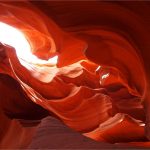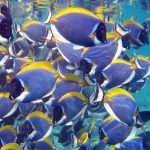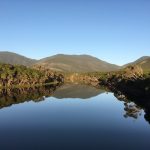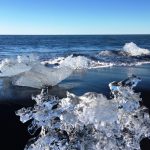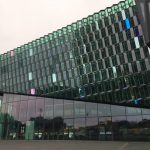
Going to Iceland? Congrats – you’ll be one of the approximately 2 millions every year! Iceland became a fancy destination, not the least because of Game of Thrones (many parts filmed here) and Youtube Videos like the Justin Bieber video of the song “I’ll show You”. So, you’re in good company! And here are some things to know when travelling o Iceland.
Anzeige*
Things to know when travelling to Iceland
Iceland is special – in many regards! For example, the amazing landscape. And the amazing amount of money it costs to see it. A lot of money for the very basic things like…
1. Accommodation
If you would like to go during the “midnight sun” months (i.e. June or July), book you accommodations as far in advance as possible, preferably more than 6 months. I did our booking just 3 months ahead – and see what we got (for example in post for “Day 3”). OK, some places were really good, but some disastrous. We found it particularly difficult to find “good value for money” on the south coast, and there between Vik and Hofn – there are not too many hotels, hostels or guest houses, and all of them are quite expensive. And more so, if you are used to getting decent hotel rooms in central Europe (like Berlin, Paris or Madrid) for around 80-130 Euros, including ensuite bathrooms and breakfast. Don’t even think in these categories for Iceland – nowhere!
“Glamping” near Husavik – see the post “Iceland in 7 Days – Day 5: Whales and Puffins”
2. Food, Drinks, Groceries…
As mentioned with regard to accommodation – the prices in Iceland are high. For us Central Europeans basically everything costs twice as much as we are used to. Hotel rooms to start with, but also food, drinks and groceries (like 10 small slices of cheese for 8 Euros). Just be prepared! For a breakfast (including 2 coffees and 2 small items like a Bagel or a Croissant) you need to schedule about 20-30 Euros. Lunch will be around 40-60 Euros, and a Dinner for two amounted during our 7 occasions never to less than 80-100 Euros. And it was only so low, because I went mostly with a salad or a soup, and we indulged in a dessert only once…
Dessert at Lindin Restaurant: Apple cake, delicious! See the Post “Iceland in 7 Days – Day 1, Icelandic Landscapes and Volcanoes”
3. Streets, Car Parks and Bathrooms
Bathrooms?? Yes, in many tourist hot spots you’ll need to pay for a pee… and you can imagine that car parks do not come for free, when the adjacent toilet requires payment. However, the streets come for free. And are mostly in a decent condition. The Ring Road is paved everywhere (except a few constructions sites). The smaller streets (mind: the higher the street number, the smaller the street) vary, some are paved and some are gravel roads. Roads with an “F” before the number are usually only “4 wheel drive compatible”. Perfect for the natives – Icelanders are really a bit “4 wheel crazy” and love their “monster SUVs”, as shown nicely in this postcard:
But the good news about the money issue in Iceland: you can pay for EVERYTHING by credit card. Even the toilet. We got some Icelandic Krona at the airport and only used it for the occasional tip (which is basically no custom in Iceland). And to add another positive aspect about the toilet issue: most toilets you’ll have to pay for are really architecturally interesting. And remember: you get some value for money. Like unique landscapes. Or like winter temperatures during summer. This leads me to the
4. Weather
We went around the 21st of June, and experienced 5 days of perfectly sunny weather with the occasional light cloud, 1 day of rain and 1 day of something in between. So far – so good. But even with sunshine, the temperatures during the day did not manage to get beyond 20 degrees centigrade. And during the night it gets really cold, like 4 degrees. So, you should bring warm clothes. Like skiing jackets and warm hiking boots. During our stay, the weather did not change from one minute to the next, but there is a saying like “don’t like the weather – just wait a minute”. As sayings usually come with a certain reason, you might prepare for changing conditions. We brought many different layers of clothes. Afterwards I would rather bring my very warm skiing jacket instead of the usual hiking jacket with outer and inner layer. As I never took my inner layer out.
And another “W” issue:
5. Water
In some places the tap water smells…strange. But you can drink it. However, we always kept some bottled water in the car. Just in case. Cases being Reykjavik, Myvatn and – surprisingly – Reykjavik. Somehow the tap water there smells disgustingly sulphuric (probably due to Hygrogen Sulphide and some even more ugly smelling compounds). I could not use it for teeth brushing, less for drinking.
6. And here’s a list of things that you probably want to avoid
- Exchange a fortune into Icelandic Krona: not necessary, just bring your credit card (but make sure there’s a pin code to it) and draw (maybe) a little bit of cash at Keflavik Airport
- Visit the Blue Lagoon: crowded and expensive, better go for the more remote places, like the Myvatn nature Bath (although it’s an artificial pool, like the Blue Lagoon) or any of the “real natural” ones scattered over Iceland.
- Speaking about pools: don’t get in without showering and washing yourself naked. More or less all pools have staff to make sure you do (or get thrown out pretty fast).
- Being disappointed because there are no northern lights in summer (it needs to get dark!). And the great ice caves only open in winter (October to March, in the best case) as well!
- Run out of petrol: in remote areas petrol stations come with most villages, but villages might be apart more than 100 km. Just be aware and fill up as soon as more than half of you petrol is gone.
- Buy bottled water: usually the tap water is great. All Icelanders will tell you that. However, I would say: don’t buy bottled water except in Reykjavik, around Myvatn and maybe some more areas, where the tapped water smells badly sulphuric. It might be healthy, but…I couldn’t bring myself drinking it….
- Ignore road signs, weather and road conditions. The weather might change rapidly, and so do road conditions. There are numerous one-lane bridges and other obstacles – just don’t speed or drive faster than conditions allow!
- Expect “summer” temperatures during summer months. Even if temperatures rise beyond 20°C during the day, the nights will still get COLD. Cold meaning close to zero degrees. Hats, scarfs, gloves, warm hiking boots and skiing jackets are appropriate items for your Icelandic summer vacation. Better warm than sorry!
7. Facts about Iceland
(adapted from https://www.islandreisen.info/de/island-infos/island-in-zahlen):
- Population: around 360000 (and 130000 of them living in Reykjavik)
- Inhabitants per square kilometer: 3,1 (Germany: 230)
- Sheep: 470000
- Horses: 80000
- Tourists: 2.5 million expected for 2018; 2.2 million (2017); 1.0 million (2014); less than 0.5 million (2009)
- Nationality of Tourists: mostly US
- Number of overnight stays: 9.01 million (2018); 5.49 million (2014); 3.00 million (2009); 2.13 (2004)
- Earthquakes: 45 per day (mostly weak)
- Phone book: sorted according to first names (last names are rather unimportant and are usually not family names. They are derived from the respective father’s first name, sometimes from the mother’s first name, and get a “son” or “dottir” (daughter) attached; thus they change from generation to generation)
- Belief in Elves: 8% are sure, 16,5% consider it probable, 31% consider it possible, 21,5% rather improbable, 13,5% impossible, Rest: no opinion
8. Icelandic horses
I’ve read that there are about 80000 horses in Iceland, which would be less than people – but I don’t believe that. When travelling 7 Days in Iceland, you see a LOT more horses than people! Anyway, Icelandic horses are quite special for many reasons:
- This horse breed has been separated from all other breeds for more than 1000 years
- Once they leave the country, they are not allowed to come back according to Icelandic law (in order to prevent the import of diseases)
- They feature four to five different gaits: besides the “normal” gaits (walk, trot and canter/gallop) the so-called Tölt, a lateral ambling gait, and some horses even perform a fifth gait, the so-called “flying pace” gait.
Overall, they are beautiful small horses (in fact, most of them are found rather in the pony than the horse size) with thick forelocks and all coat colors you can imagine. And they will be your main companions – besides the pervasive sheep – when travelling through the lonelier areas in the east and north…
9. Finally, my personal highlights of our “Iceland in 7 days” tour
 Jökulsarlon Glacier Lagoon: a most special place
Jökulsarlon Glacier Lagoon: a most special place  Kirkjufell Mountain: my favorite mountain
Kirkjufell Mountain: my favorite mountain Geothermal Area near Myvatn: smelly, but interesting
Geothermal Area near Myvatn: smelly, but interesting  Landscape: the entire island is composed of interesting landscapes, and I particularly liked the wide fields of blue lupines, with green meadows and white glaciers in the back
Landscape: the entire island is composed of interesting landscapes, and I particularly liked the wide fields of blue lupines, with green meadows and white glaciers in the back Waterfalls: of course, there are probably thousands…but my personal favorites are Seljalandsfoss and Godafoss
Waterfalls: of course, there are probably thousands…but my personal favorites are Seljalandsfoss and Godafoss
Greetings from Iceland!
Read more about Iceland:
*According to a German Court decision, all texts containing links to commercial pages (e.g. links to Tripadvisor, Airline, hotel or restaurant websites) have to be identified as “commercial” (in German “Anzeige”). As my texts do contain links like that, I therefore identify each post and page containing a link as “Anzeige”. However (and referring to the “About Me” page) I would like to point out that I do NOT post any sponsored content in my texts. I pay for all my trips myself.


